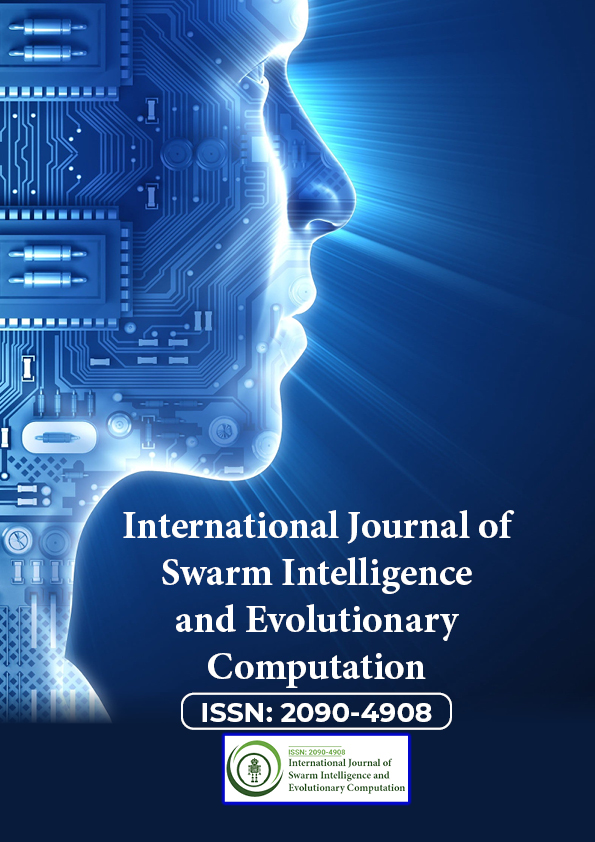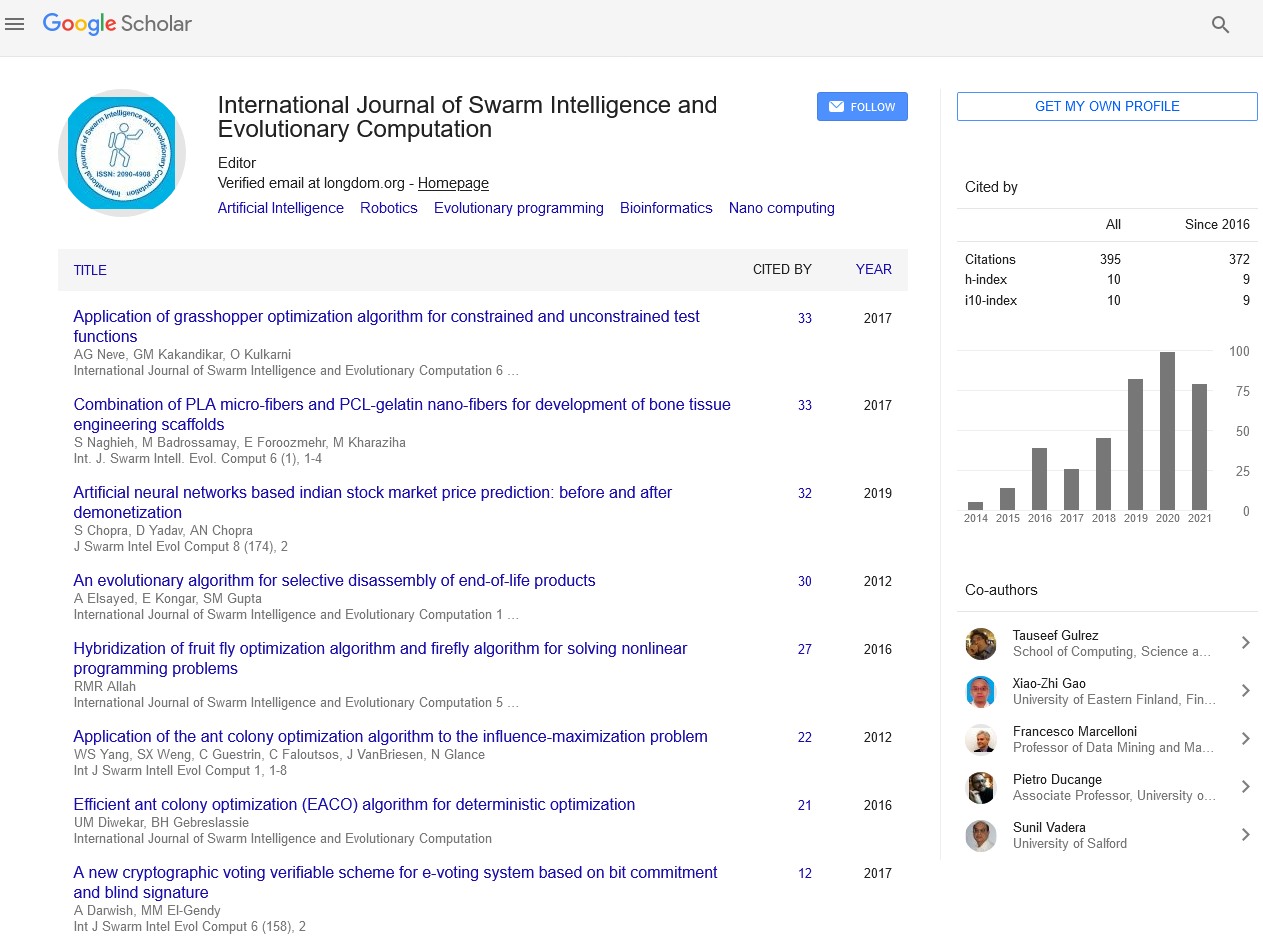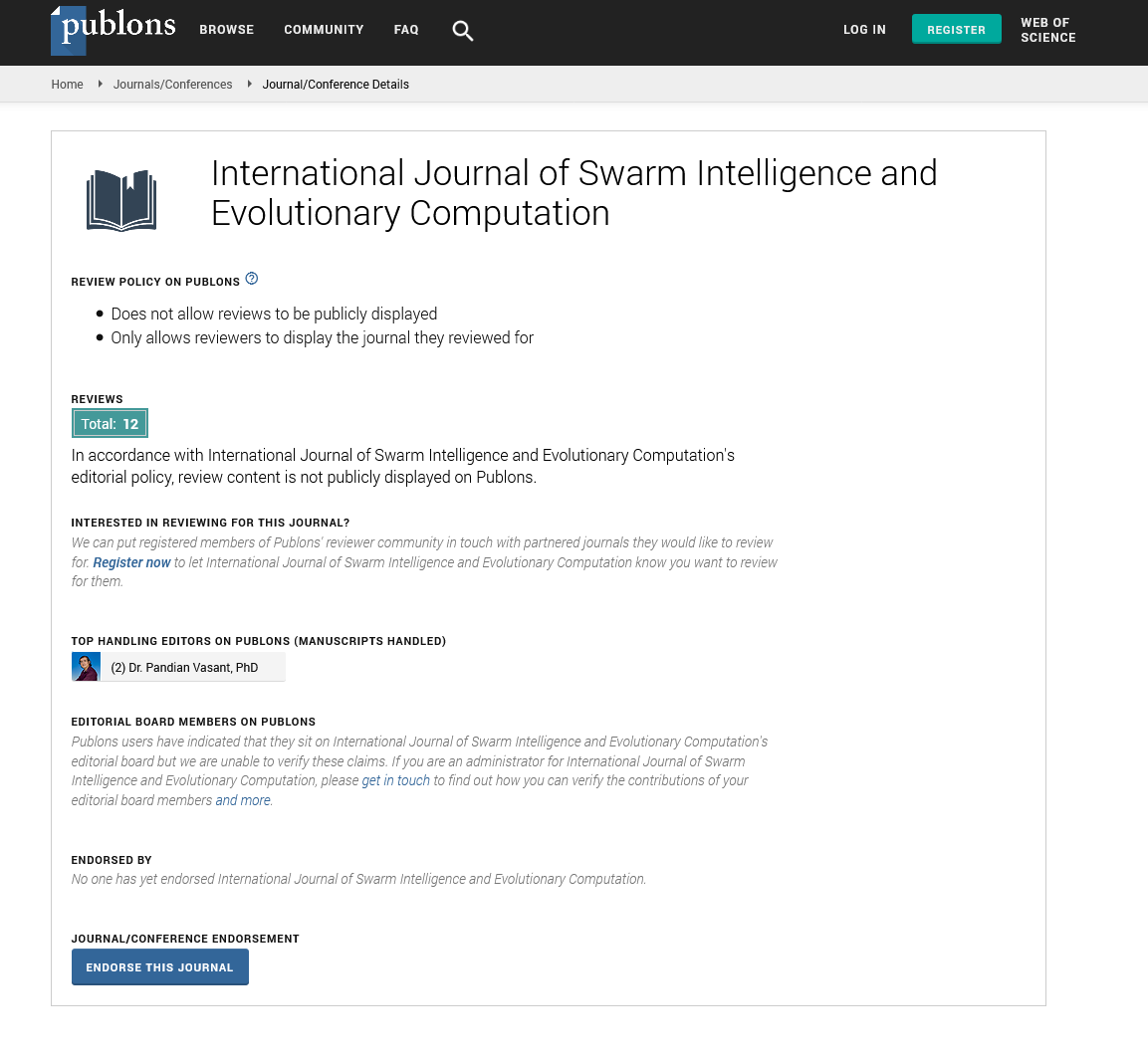Indexed In
- Genamics JournalSeek
- RefSeek
- Hamdard University
- EBSCO A-Z
- OCLC- WorldCat
- Publons
- Euro Pub
- Google Scholar
Useful Links
Share This Page
Journal Flyer

Open Access Journals
- Agri and Aquaculture
- Biochemistry
- Bioinformatics & Systems Biology
- Business & Management
- Chemistry
- Clinical Sciences
- Engineering
- Food & Nutrition
- General Science
- Genetics & Molecular Biology
- Immunology & Microbiology
- Medical Sciences
- Neuroscience & Psychology
- Nursing & Health Care
- Pharmaceutical Sciences
Perspective - (2025) Volume 14, Issue 1
Swarm Intelligence as Muse: Inspiring Novel Architectures and Paradigms Beyond Centralized Artificial Intelligence
Alan Bergmann*Received: 12-Feb-2025, Manuscript No. SIEC-25-28699; Editor assigned: 14-Feb-2025, Pre QC No. SIEC-25-28699 (PQ); Reviewed: 28-Feb-2025, QC No. SIEC-25-28699; Revised: 07-Mar-2025, Manuscript No. SIEC-25-28699 (R); Published: 14-Mar-2025, DOI: 10.35248/2090-4908.24.14.416
Description
Traditional Artificial Intelligence architectures have often been characterized by a reliance on centralized control, with complex algorithms executed by a single, powerful processing unit. While this approach has yielded significant advancements, it can also lead to limitations in terms of fault tolerance, scalability, and adaptability, particularly when dealing with highly dynamic and distributed environments. Swarm Intelligence offers a compelling alternative paradigm, drawing inspiration from the decentralized and self-organizing principles observed in natural swarms to inspire the development of novel AI architectures that move beyond the constraints of centralized control.
One key area where SI is influencing AI architecture is the concept of multi-agent systems (MAS). In contrast to a single, monolithic AI agent, MAS involve the collaboration of multiple, simpler AI agents to solve complex tasks. Each agent typically possesses limited local knowledge and capabilities, interacting with its immediate neighbors based on defined communication protocols and behavioral rules. Through these local interactions and the exchange of information, a collective, intelligent behavior emerges at the system level that is far greater than the sum of its individual parts. This directly mirrors the way ant colonies or bee swarms accomplish intricate tasks such as foraging, nest building, and defense without any central command or global blueprint.
Furthermore, the core principles of self-organization and emergence that underpin Swarm Intelligence are inspiring the design of more flexible and adaptive AI algorithms. Instead of relying on explicitly programmed rules for every possible scenario, AI systems can be designed to learn and adapt their behavior dynamically based on local interactions, feedback from the environment, and the collective experience of the agent population. This approach, often seen in bio-inspired machine learning algorithms, allows AI systems to exhibit a greater degree of robustness and adaptability in the face of uncertainty and change, similar to how a natural swarm responds to shifts in its environment. The exploration of distributed learning algorithms, where multiple agents collaboratively learn a task through local interactions and information sharing, is another example of SI principles influencing AI design. This shift towards decentralized and emergent AI architectures holds the promise of creating more resilient, scalable, and intelligent systems capable of tackling the increasing complexity of the real world. By drawing inspiration from the elegant simplicity and collective power of natural swarms, we can unlock new frontiers in the design and development of artificial intelligence.
Swarm intelligence represents a paradigm shift in how we think about AI systems. By moving away from centralized control and embracing decentralized, self-organizing systems, swarm intelligence offers a new path for designing AI that is more adaptable, resilient, and scalable. This shift has the potential to revolutionize industries such as robotics, healthcare, transportation, and environmental monitoring, where traditional AI systems may struggle to meet the demands of real-time decision-making, adaptability, and scalability.
The principles of swarm intelligence suggest that AI does not need to rely on a central authority to function effectively. Instead, local interactions, cooperation, and emergent behavior can drive complex decision-making processes that are dynamic and responsive to environmental changes. By harnessing these principles, future AI systems may be able to better navigate the complexities and uncertainties of the real world.
Swarm robotics is a prime example of how swarm intelligence is being applied to real-world problems. In swarm robotics, multiple robots operate together in a coordinated manner, each robot performing a specific function within the larger task. The robots rely on simple local rules and communication to synchronize their actions and collectively achieve a common goal. For instance, in agriculture, robots in a swarm might work together to plant seeds, water crops, or monitor soil health, adjusting their tasks in response to environmental feedback.
The collaborative nature of swarm robotics opens up possibilities for large-scale, distributed systems that can operate in dynamic environments with minimal human intervention. The flexibility and scalability of swarm robotics also allow for the efficient use of resources and the ability to perform complex tasks in challenging or hazardous environments, such as search and rescue operations or space exploration.
Citation: Bergmann A (2025). Swarm Intelligence as Muse: Inspiring Novel Architectures and Paradigms Beyond Centralized Artificial Intelligence. Int J Swarm Evol Comput. 14:416.
Copyright: © 2025 Bergmann A. This is an open-access article distributed under the terms of the Creative Commons Attribution License, which permits unrestricted use, distribution and reproduction in any medium, provided the original author and source are credited.


